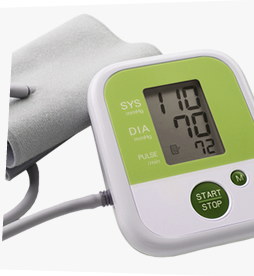 MobiHealthNews covered health coaching platform company Healthrageous's $6.5 million second round funding last month, but the company just announced that the final investor in that round was the Partners Innovation Fund, a division of Partners HealthCare. Partners is the parent company of the Center for Connected Health, the group Healthrageous spun off from when it was founded.
MobiHealthNews covered health coaching platform company Healthrageous's $6.5 million second round funding last month, but the company just announced that the final investor in that round was the Partners Innovation Fund, a division of Partners HealthCare. Partners is the parent company of the Center for Connected Health, the group Healthrageous spun off from when it was founded.
Healthrageous CEO Rick Lee said that Partners Innovation Fund was in discussions about investing when the company was founded, but a change in their conflict of interest policy prompted them to alter the relationship. Partners holds a royalty license for the Healthrageous technology developed at the Center for Connected Health. Lee sees the benefit in having Partners as a full-fledged investor.
"It has a lot of gravitas in the world of medical science," said Lee, "and if you’re pitching your commercial application to a chief medical officer who was trained at Mass Gen or Brigham and Women's it’s something they relish and regard with a good deal of recognition and support. So it is an excellent marketing angle for us."
The same Center for Connected Health study that led to Healthrageous's founding was finally published in the October 2012 issue of the American Heart Journal. In a randomized clinical trial of 404 employees with pre-hypertension or hypertension who worked at EMC, those who used a web-based self-management program showed a 95 percent sustained engagement rate and were more likely to have lowered their blood pressure.
People in the intervention group used an online program and a provided blood pressure cuff to track their readings and share them with their care providers securely. At the end of the study, 22 percent experienced a greater than 10 mmHg drop in systolic blood pressure and 29 percent had a greater than 5 mmHg drop in diastolic blood pressure. Overall, the intervention group had a statistically significant drop in average diastolic, but not systolic pressure. In addition, participants were more likely to report starting a new medication or communicating better with their doctor.
Healthrageous says the data from its ongoing hypertension self management offering suggests the outcome continues beyond six months. The company reported a 70 percent sustained engagement rate for participants in its program.
Today, Healthrageous offers monitoring and biofeedback solutions through mobile devices as well as the web, and has expanded its area of operations beyond hypertension, launching a recent pilot for diabetes management. It's all based on the same philosophy of using constant monitoring, game and social dynamics, and biofeedback to motivate behavior change. But Lee says a lot has changed in the three years since the initial trial was conducted. The move from a connected to a wireless blood pressure cuff increases ease of use, as does the early move from PC-based web connectivity to mobile use.
"The big improvement in the business model, ... that, for obvious reasons, wasn’t tried in the initial trial, was investing in machine learning and building a machine learning platform that could personalize messages to the end user. It collects demographic and preference data about each user and then uses it to better inform about what questions to ask and how to ask them," Lee said.
He also said current hypertension interventions through Healthrageous include an accelerometer, since increasing activity is the best way, apart from medication, to combat hypertension. Users see graphs of their activity rates displayed alongside blood pressure, so they can see the effect movement has.
The interface and the machine learning platform are both likely to improve soon. Those are two areas the company said it would improve with the money from last month's funding round.

















